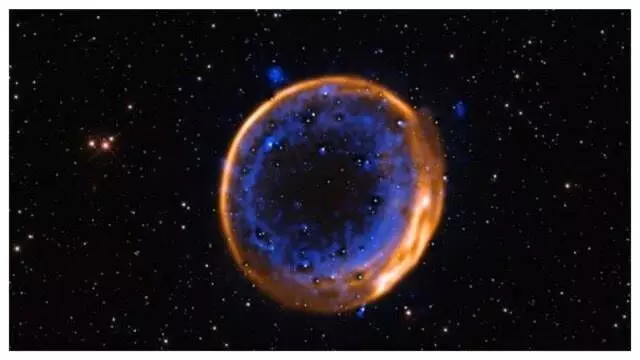Can a Star Die Twice? Scientists Witness Rare Cosmic ‘Double Detonation’
Scientists captured the first visual proof of a rare “double detonation” in a white dwarf star, showing a star can explode twice before becoming a supernova.
image for illustrative purpose

Scientists at the European Southern Observatory (ESO) have captured the first visual proof of a rare cosmic phenomenon known as a “double detonation” in white dwarf stars, challenging the long-held belief that stars only explode once.
Using the Very Large Telescope (VLT) and the Multi Unit Spectroscopic Explorer (MUSE), ESO researchers studied the supernova remnant SNR 0509-67.5, located over 160,000 light-years away. The supernova, which exploded more than 300 years ago, showed signs of its progenitor star detonating twice.
“This concrete evidence of double detonation not only helps solve a long-standing astronomical mystery but also offers an incredible visual spectacle,” said Priyam Das, a lead researcher from the University of New South Wales.
Traditionally, scientists believed white dwarf stars could only explode once after reaching the Chandrasekhar limit—about 1.4 times the mass of our Sun. However, this new finding suggests some stars might become supernovas without reaching that threshold.
White dwarfs are known for their Type Ia supernova explosions, which serve as “standard candles” for measuring cosmic distances due to their consistent light emission. While the general consensus held that these explosions occur when a white dwarf star siphons matter from a companion star until it surpasses the Chandrasekhar limit, the exact explosion trigger remained unclear.
The double detonation theory explains that as a white dwarf star pulls helium-rich material from a companion, the helium layer becomes unstable and ignites, causing the first detonation. This shockwave then triggers a second, more powerful explosion in the star’s core, resulting in a supernova—even before the star reaches the critical mass.
Scientists confirmed the presence of this “double detonation fingerprint” in the debris of SNR 0509-67.5, providing the first visual evidence of a star’s “second death” and opening new avenues for understanding stellar explosions and cosmic distance measurements.

